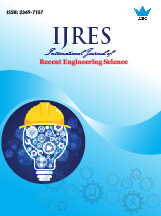Power Factor Improved and Reactive Power Compensation by using STATCOM
 |
International Journal of Recent Engineering Science (IJRES) |  |
| © 2016 by IJRES Journal | ||
| Volume-3 Issue-5 |
||
| Year of Publication : 2016 | ||
| Authors : Miss. Prachi P. Khadatkar, Asst. Prof. Dinesh D. Majumdar |
||
| DOI : 10.14445/23497157/IJRES-V3I5P102 |
How to Cite?
Miss. Prachi P. Khadatkar, Asst. Prof. Dinesh D. Majumdar , "Power Factor Improved and Reactive Power Compensation by using STATCOM," International Journal of Recent Engineering Science, vol. 3, no. 5, pp. 7-9, 2016. Crossref, https://doi.org/10.14445/23497157/IJRES-V3I5P102
Abstract
In recent year power quality is reduced due to harmonics as well as demand of power generation so for that compensation of reactive power is needed. This paper deals with reactive power compensation techniques. In this paper linear load produce voltage drop and non-linear load produce harmonics is reduced by using STATCOM
Keywords
voltage source converter; Statcom; PI controller.
Reference
[1] Senzo Mkhize, Prof. B. S. Rigby, DSP-Based control of STATCOM: final report, University of Kwazulu-natal, Faculty of Engineering, Nov. 2006.
[2] S.Hadjeri, Fatiha Ghezal and S.A.Zidi:Simulation of a three level 48 pulses STATCOM.
[3] Adepoju G. A. Komolafe O. A. "Analysis and Modelling of STATCOM: A Comparison of Power Injection and Current Injection Models in Power Flow Study” InternationalJournal of Advanced Technology Vol. 36 Nov. 2011.
[4] Alper Cetin,“Design and Implementation of VSC based STATCOM For Reactive power Compensation And Harmonic Filtering”, Middle East Technical University, 2007.
[5] D.Murali and Dr. M. Rajaram, “Active and Reactive Power Flow Control using FACTS Devices”, International Journal of Computer Applications (0975 – 8887) Volume 9– 8, November 2010.
[6] M. Sengupta, J. K Moharana and A. Sengupta, “ Study on an Advanced Static VAR Compensator switched from a Space Vector PWM inverter –Analysis, simulation and comparison with the conventional sinusoidal PWM, NPEC 2003, IIT Bombay, 16-17 Oct 03 pp 72-78.
